The military pillbox of Bumbong Lima
A forgotten relic whose serenity belies a wartime crisis of the past
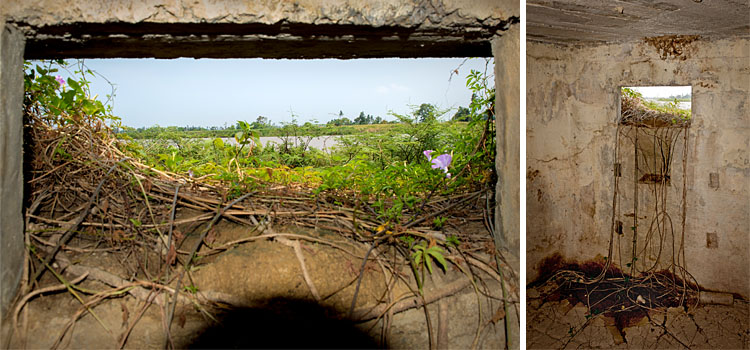
The sleepy hinterland of Bumbong Lima in Seberang Perai is better known for its iconic Merdeka Bridge which spans across the great Sungai Muda river, bisecting the state of Penang on this side from neighbouring Kedah in the north.
While people crossing the bridge are generally aware that there is some historical significance attached to this monument, they invariably fail to notice another object of equal historical import lying nigh around.

For if one were to veer along a narrow overlooked thoroughfare about a hundred metres west of the overpass, one may notice a crouching warm grey figure stooped motionless on a low-lying plain, below the road level.
You have to get closer and peer over the overhanging road before finding that the body is actually a ghostly bunker-like relic. It is in fact a pillbox – a completely enclosed little concrete fort on the ground.
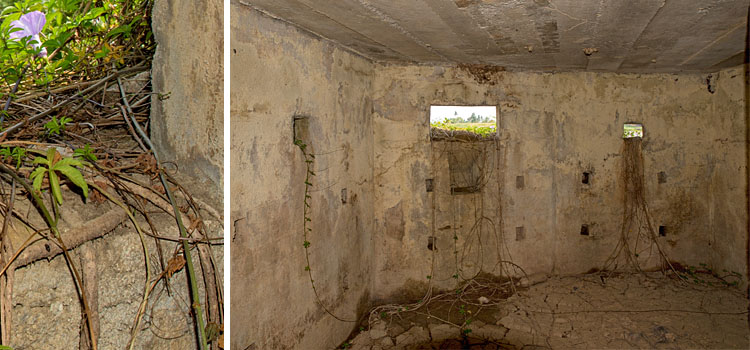
The octagonal structure was built by the British colonial army in Malaya to serve as a watch post along the riverside. It is half-buried in the earth, possibly to make it easily camouflaged.
It was probably constructed around the 1930s or early 1940s as this was the period in which the British were prolifically constructing pillboxes of similar kinds in their territories in Europe and Asia, in the lead-up to the Second World War.
This structure is one of four known pillboxes from the colonial era that still exist in public spaces in Penang. The others are on the island - in Tanjong Tokong, Mount Erskine and Relau. All of them are in a state of abandonment and neglect.
Our forebears who lived through this period may vividly sense the atmosphere around this pillbox being tense and edgy during the war, especially in the nervous weeks before the Japanese Imperial Army advanced across the river during its invasion of Malaya in December 1941.
There is however no easily discernible damage on the structure, not even a single bullet hole. This may be because when the Japanese forces entered Penang without resistance along this route the British were already fleeing the country.
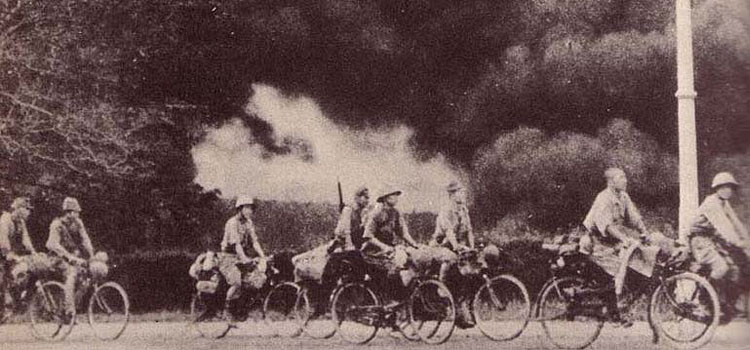
Japanese troops advancing on bicycles, Malaya, circa Dec 1941-Feb 1942
(Source: ww2db.com, added by C. Peter Chen)
Today the site presents a contrasting setting, tranquil and picturesque, with the remains encircled by lush thick grassland dappled with bright blooms of purple Morning Glories.
Stepping within the thick walls one cannot help but feel a pleasant cooling sensation amid the tropical daytime heat outside, indicating that the structure was designed to be well ventilated.
Wild shrubs and tree roots have overgrown through the open notches on its walls that were once used by military sentries as peepholes to view through for their lookout duties. The notches are on every side, affording a wide panoramic ground-level perspective of a large swathe of the river and the land on the opposite side.
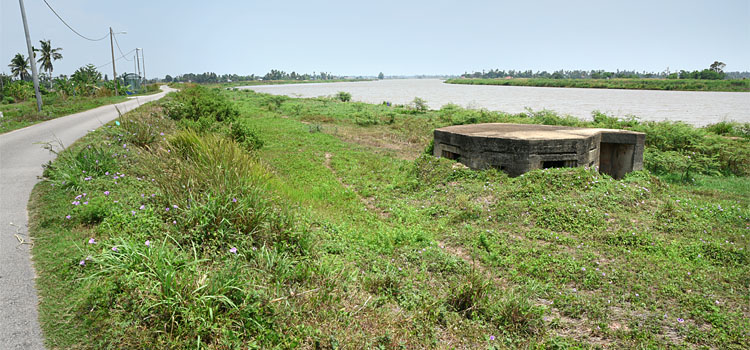
Overall the structure is quite sturdy and robust, and still seems impregnable, even after the very many decades. It is said that it was built by Indian paramilitary soldiers under British command who were stationed here.
The British must have kept close watch over the river, especially when Kedah was under Siamese control. They had also built a network of trenches in the vicinity on the riverbank but these have since been reclaimed by the earth.
Local villagers near the area called the trenches ‘parit gila' or “mad gullies”, probably because of the way civilians rushed helter-skelter into them during times of emergency.
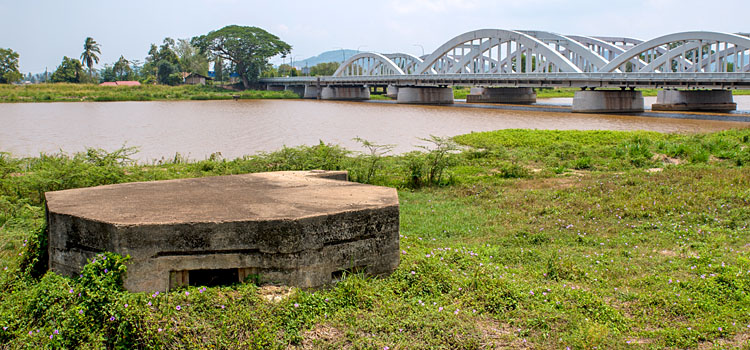
Interestingly, it is said that when the Japanese surrendered to the British in August 1945 after occupying Malaya for four years, the Japanese battalion here dumped its military equipment and armaments into the Muda River around the site of the current bridge.
We may hopefully find remnants of these discarded materials some day, if indeed they do exist.
In the meantime, the shadowy pillbox shall remain in stony silence by the river as it has for the last seventy years, like a solemn apparition that guards untold stories, with the hulking metallic bridge looming beyond in the distant background.
-------------------------------------------
Written by Himanshu Bhatt
Photographs by Adrian Cheah